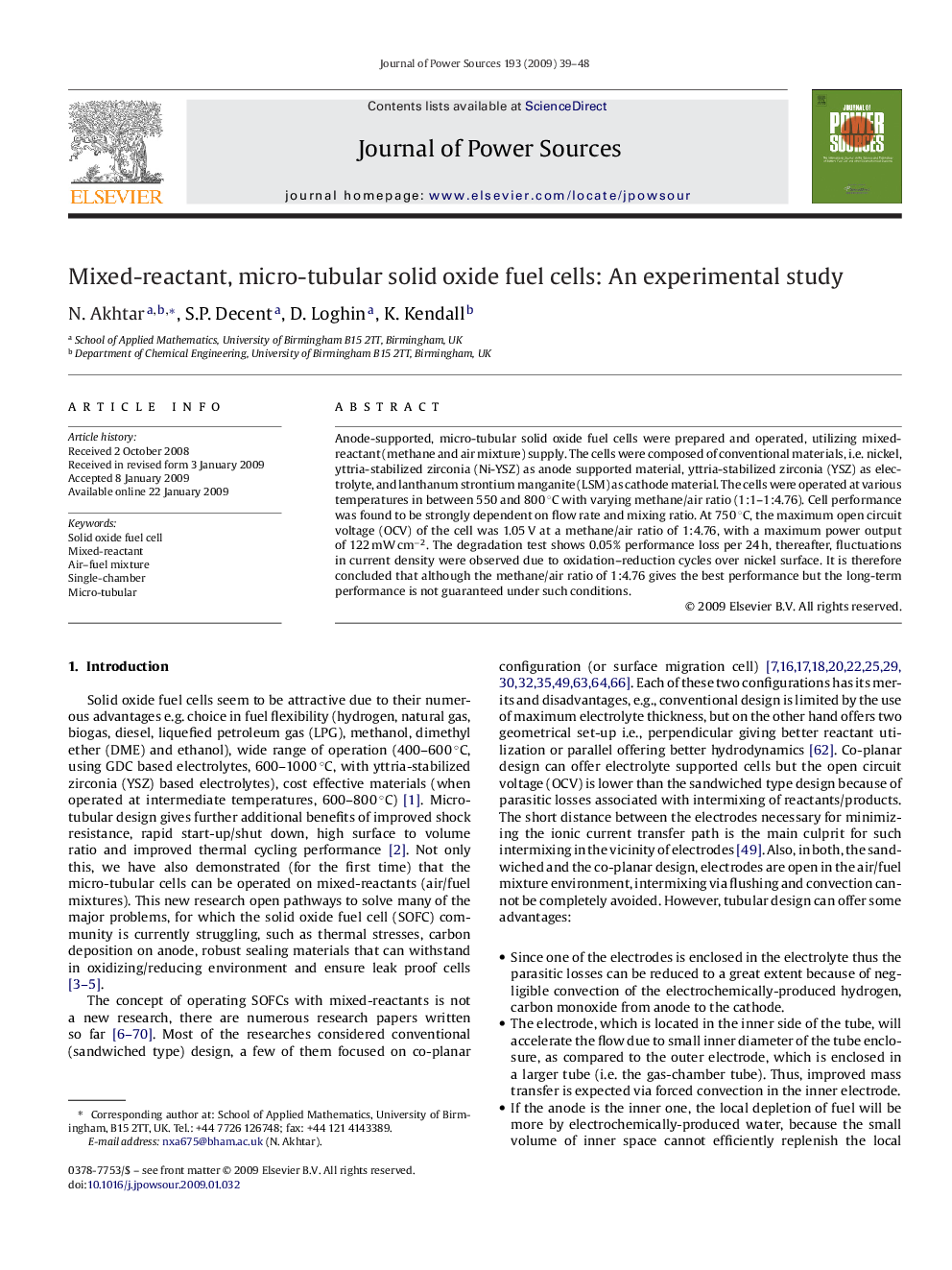| Article ID | Journal | Published Year | Pages | File Type |
|---|---|---|---|---|
| 1289448 | Journal of Power Sources | 2009 | 10 Pages |
Anode-supported, micro-tubular solid oxide fuel cells were prepared and operated, utilizing mixed-reactant (methane and air mixture) supply. The cells were composed of conventional materials, i.e. nickel, yttria-stabilized zirconia (Ni-YSZ) as anode supported material, yttria-stabilized zirconia (YSZ) as electrolyte, and lanthanum strontium manganite (LSM) as cathode material. The cells were operated at various temperatures in between 550 and 800 °C with varying methane/air ratio (1:1–1:4.76). Cell performance was found to be strongly dependent on flow rate and mixing ratio. At 750 °C, the maximum open circuit voltage (OCV) of the cell was 1.05 V at a methane/air ratio of 1:4.76, with a maximum power output of 122 mW cm−2. The degradation test shows 0.05% performance loss per 24 h, thereafter, fluctuations in current density were observed due to oxidation–reduction cycles over nickel surface. It is therefore concluded that although the methane/air ratio of 1:4.76 gives the best performance but the long-term performance is not guaranteed under such conditions.
